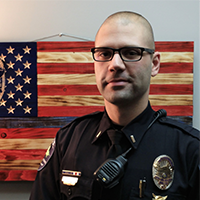 Lt. Jason Wetherby: Is a decorated officer with 14 years full time law enforcement experience. He is Commander of the Northwest Special Response Team (Tactical Team), the Patrol Commander and oversees all Department special activities and events. His training includes training with the Special Operations Division of D.C. Metropolitan Police Department and Leadership in Police Organizations.
Lt. Jason Wetherby: Is a decorated officer with 14 years full time law enforcement experience. He is Commander of the Northwest Special Response Team (Tactical Team), the Patrol Commander and oversees all Department special activities and events. His training includes training with the Special Operations Division of D.C. Metropolitan Police Department and Leadership in Police Organizations.
Lt. Jason Wetherby
Obituaries January 2019
CONNECTICUT
Clinton George “Red” Burnham
Judith Rabe
Donald W. Sharpe
Robert E. Barton
Delor A. Grimond Jr.
MASSACHUSETTS
Robert W. Yaeger
Joan Morris McNally
Paul T. Seamans
Gerald Budgar
Matthew Cavanaugh III
Mary E. (Clayton) Crozier
Cynthia McManus
Gerald Budgar
MAINE
Kathleen A. (Brousseau) Martin
Carla McGuire
Theodore Raymond “Ted” Howard
Look in a mirror to find your best editor

In an era of constant cutbacks, it can be difficult for newspaper reporters to get good editing.
Many experienced editors have fled or been forced out of a constricting industry. Some who remain are distracted by expanded job duties. Younger editors may not possess the experience and resulting confidence to aggressively edit or rework copy.
Meanwhile, copy editors – long the last line of defense against poor writing — are diminishing in number and may serve as page designers with numerous other duties. Opportunities for training have also been slashed or eliminated.
Yet, all is not lost. Whether or not one works with a top-notch editor, the truly devoted writer can use their skills, work ethic and commitment to quality to aggressively self-edit their copy and improve their writing. Becoming a great writer is a lifelong journey and invariably begins from within.
Here are some ways to eliminate errors, reduce wordiness and sharpen your copy on your own.
- A common catchphrase from my coaching sessions applies here: “Your first draft is never your final draft.” Intense deadline or crisis writing aside, every writer should review their own work more than once (possibly several times) before turning it over to an editor. Printing off a hard copy and marking it up is a worthy technique. Reading the piece aloud and listening for clunky construction or confusing content works wonders. Underlining or highlighting each name, number and fact makes it easy to double-check for accuracy.
- Examine your own copy for indicators – or what I refer to as “triggers” – that reveal the need for a rewrite or rework. You know more editing is needed if you see any of the following: heavy use of punctuation, overly long sentences, lack of parallelism among
subjects and verbs, subject-verb disagreement, lengthy separation between a subject and corresponding verb, confusing use of attribution, repetition of sentence structure or word usage, long introductory clauses, quirkiness or AP style errors. - Sincerely ask for input or advice, listen to feedback and take it to heart. Every writer has tendencies – some positive, some negative. Reread your material after the edit and look for elements repeatedly changed or cut. Ask your editor what patterns of weakness he or she notices in your copy and heed the advice. Learn from errors and never make the same mistake twice. If you work for a complacent or burned out editor who reads your story quickly and says, “OK, thanks a lot, have a good night,” do not hesitate to push back and force them to spend more time and give more focus to improving your copy. Be a bit of a pest if you have to. Reading a story and editing a story are not the same.
- Challenge yourself to expand your range and writing techniques. Try to be funny when appropriate. Seek out subjects for an in-depth, definitive profile (increasingly a lost art in modern journalism.) Suggest a first-person piece once in a while. Bend all the rules once you master them, such as starting with a quote, trying a one- or two-word lead, moving back and forth in time, setting a scene or beginning with the end of the story. However, never hesitate to pull the plug on a new method or technique if it simply
does not work. - Learn some basic concepts of effective writing and implement them. These include sticking to the subject-verb-object sentence structure, avoiding jargon and high-brow or pompous words that are unfamiliar to most readers, rejecting passive voice, steering clear of adjectives and adverbs that weaken and dilute meaning, and always searching for clear, unique subjects and specific, active verbs.
- Respect your readers’ intelligence and time. Most of us have heard the old saying, “I would have written you a shorter letter but I ran out of time.” That’s true in journalism, too. Cutting excess words, reducing redundancy, trimming back quotes and taglines are ways to speed up copy. Write in a conversational tone, but never get too cute or clever with copy to show off or appear boastful. Tell readers what is rather than what isn’t and write in the affirmative rather than negative voice. Just stick to the facts in most cases.
- Be a student of the craft. Read major newspaper and magazines to see how the experienced professionals write. Emulate what you like from other publications or in the work of colleagues and be critical of your own work in comparison. Go online and read coaching articles like this one. Consistently ask to attend training conferences and eventually even the most frugal editor or publisher will oblige. Visit websites that feature writing and reporting tips and techniques (Poynter.org is a fine example.) Discuss writing with your colleagues and challenge one another to improve.
Writing effectively almost never happens by luck. Increasingly, it is up to writers to put in the time and effort on their own to improve their ability to communicate and write with clarity, concision and flair. In the end, readers will benefit and so will you.
Multi-tasking = multi-risking
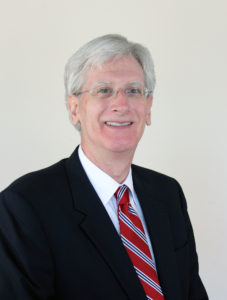
Joseph was talking to me about something he feels is important to the ad staff he manages. “These days, there’s a lot of talk about multi-tasking,” he said. “But according to what I’ve read on the subject, there’s no such thing. We can shift back and forth between tasks, but doing two tasks at once would be like putting a stick-shift car in first gear and second gear at the same time. It can’t be done.
“Sadly, multi-tasking is seen as a desirable skill,” Joseph explained. “I know a lot of people who claim it’s one of their greatest strengths. Some job descriptions even list it as a requirement. They just don’t understand that multi-tasking is an unrealistic cliché.”
Psychologists agree that a human being is not capable of doing two tasks at the same time. Sure, we can do two things that don’t compete for our focus (like carrying on a conversation while walking), but we can’t concentrate on more than one thing at a time. When we think we are multi-tasking, we are actually task-switching – moving quickly from one thing to another. Think of it as a fast shift between first and second gear.
“I think of multi-tasking as multi-risking,” Joseph said. “We’ve all seen YouTube videos of
people walking into telephone poles and falling into fountains while they’re looking at their
phones. And of course, we know that texting and driving is a lethal combination. Talking on the phone while driving is distracting enough, but texting is stupid. It’s as dangerous as drunk driving.
“In the business world, trying to do two things at once might not put your life in danger, but it can cause mistakes. For example, if you try to write an email and talk on the phone at the same time, you’ll risk miscommunicating something to both parties. You can give one or the other your undivided attention, but not both. Even if you don’t make a mistake, it can be frustrating to the person on the other end to hear your keyboard clicking in the background.
“Trying to multi-task can also damage relationships,” he said. “I remember going to a luncheon which featured several presenters. The manager of one of the speakers was there to support her staff member, but spent the entire time looking down at her phone. Her seat was at the head table, right next to the lectern, so everyone in the audience could see that she wasn’t paying attention. A few days later, I ran into the speaker, and he told me that his manager’s actions showed that she obviously didn’t care about what he was saying, even though he was talking about the company where they both worked. Not surprisingly, a few months later he left to take another job.”
Joseph is right about multi-risking. When someone tries to concentrate on two important things at the same time, it creates a risk that is not worth taking.



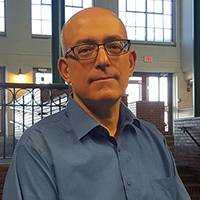
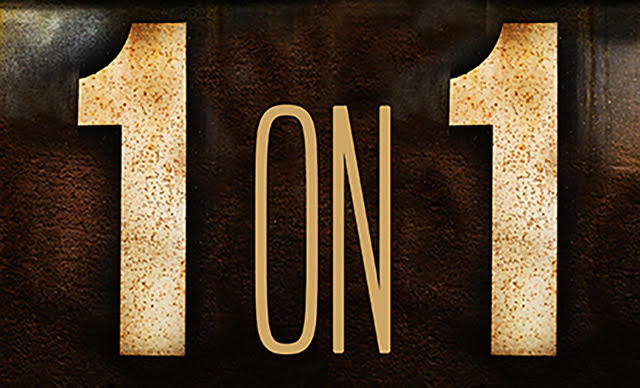
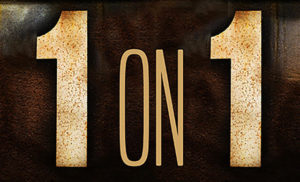 This year the
This year the 
 Implementation at 27 publications already underway
Implementation at 27 publications already underway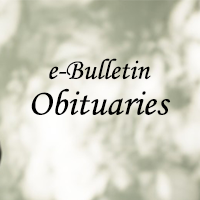



 Believe it or not 2019 is right around the corner … and so is the largest newspaper convention in New England.
Believe it or not 2019 is right around the corner … and so is the largest newspaper convention in New England.